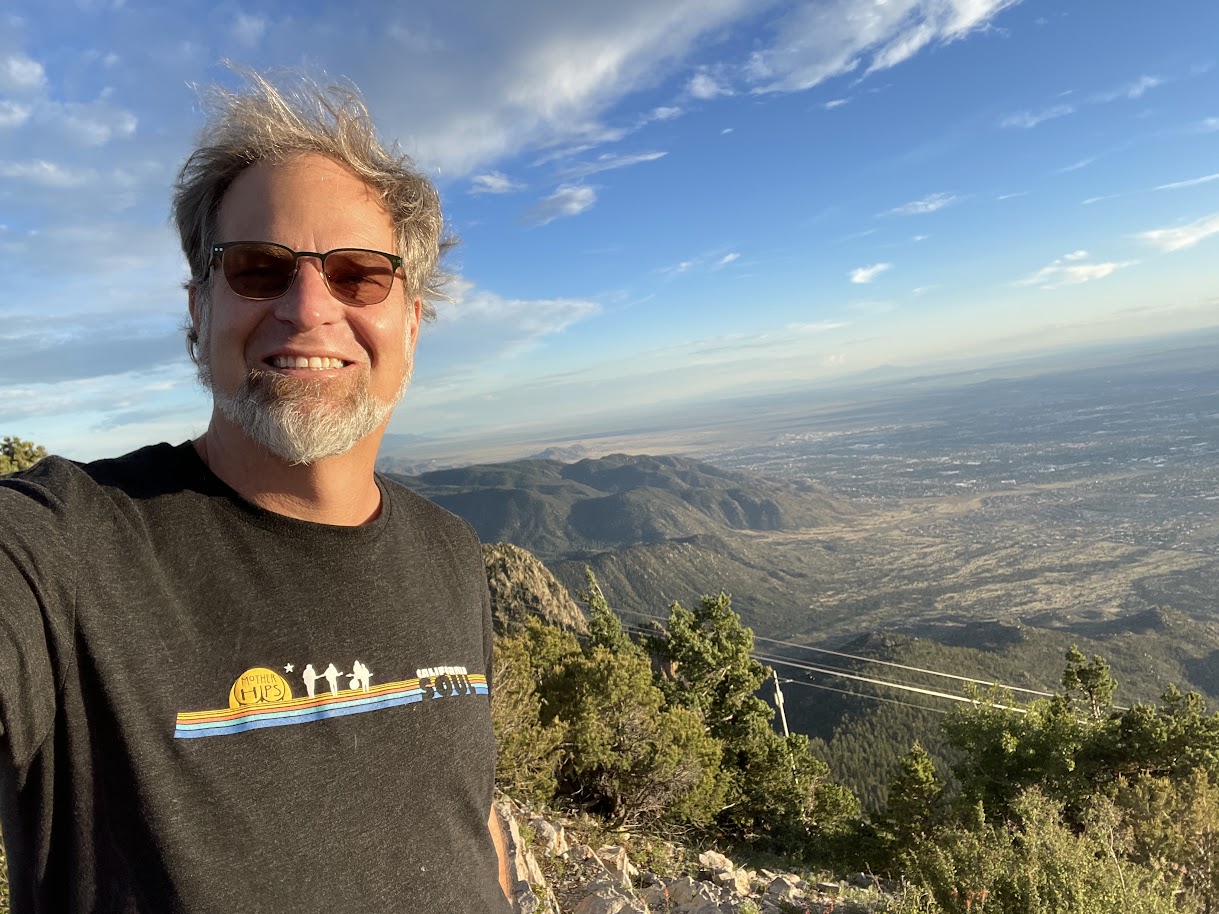Bob Beatty, Ph.D., is an author, historian, and principle of the Lyndhurst Group.
I’m a lifelong fan of the Allman Brothers Band and Duane Allman. In addition to my publications—Play All Night! Duane Allman and the Journey to Fillmore East (2022) and Long Live the ABB: Conversations from the Crossroads of Southern Music, History, and Culture — I’m also a museum professional.
One thing I’ve long found fascinating is why certain artifacts instill such reverence. Nowhere is this more true than in music history circles.
In recognition of National Guitar Day on this February 11th, this is the story of Duane Allman’s 1961 Gibson Les Paul.
Some Background
Guitarist Duane Allman founded the Allman Brothers Band (ABB) in March 1969. Based in Macon, Georgia, the ABB are the first group to emerge from the South in the rock era. From Macon, the band toured relentlessly, spending 300 days a year on the road and building a devoted audience.
The ABB had a unique lineup that included two drummers—Jaimoe and Butch Trucks—and two lead guitar players—Duane Allman and Dickey Betts. Bassist Berry Oakley and Duane’s brother Gregg Allman (organ/vocals) rounded out the group.
The band recorded their third album live on the biggest stage in rock. At Fillmore East a one-take album with no overdubs. The record hit gold (500,000 sales) within 3 months. Days after learning the news, Duane Allman was killed in a motorcycle accident in Macon. His bandmates responded by finishing Eat a Peach, which they were working on when Duane died.
Duane played four main guitars in his Allman Brothers Band tenure. This is the story of one of them.
The Guitar
This 1961 Gibson Les Paul (SG)1 is one of the more significant in Allman Brothers history because it is the only guitar that I know of that both Duane and his guitar partner Dickey Betts played on a regular basis. Dickey throughout 1970, Duane in 1971.2
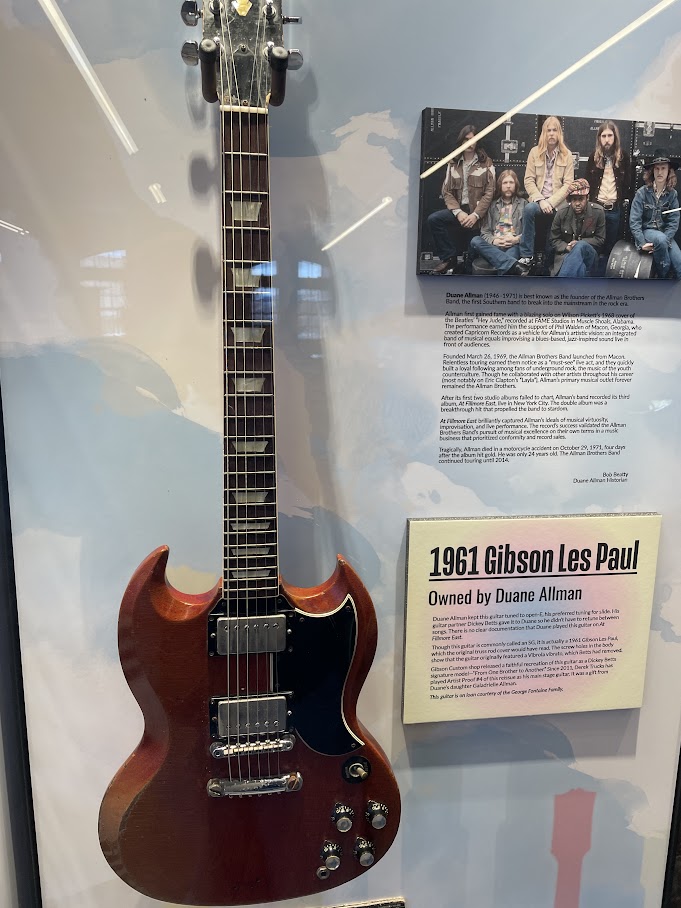
Lipham’s Music January/February 1970
Betts bought the guitar in 1970 from the place every road musician in Florida shopped: Lipham’s Music in Gainesville. Just one year earlier, Buster Lipham had advanced the band more than $10,000 in equipment, which they were paying back in weekly installments of several hundred dollars each.3
Duane’s SG was part of a separate transaction altogether, Chuck Emery of the Royal Guardsmen explained. “On a trip to [Lipham’s] in early ’70 a beautiful SG caught my eye. I came to a deal; and the sales guy put the guitar [aside] until my return the next week. The following Monday the sales guy said, ‘Uh, Duane and them came in…played the SG, and uh, well, they bought it.’”4
Dickey Betts and the SG Spring 1970
The SG became Dickey’s main stage guitar throughout 1970. It originally had a sideways Vibrola tremolo which he later swapped out for a stop bar tailpiece (see photos below):
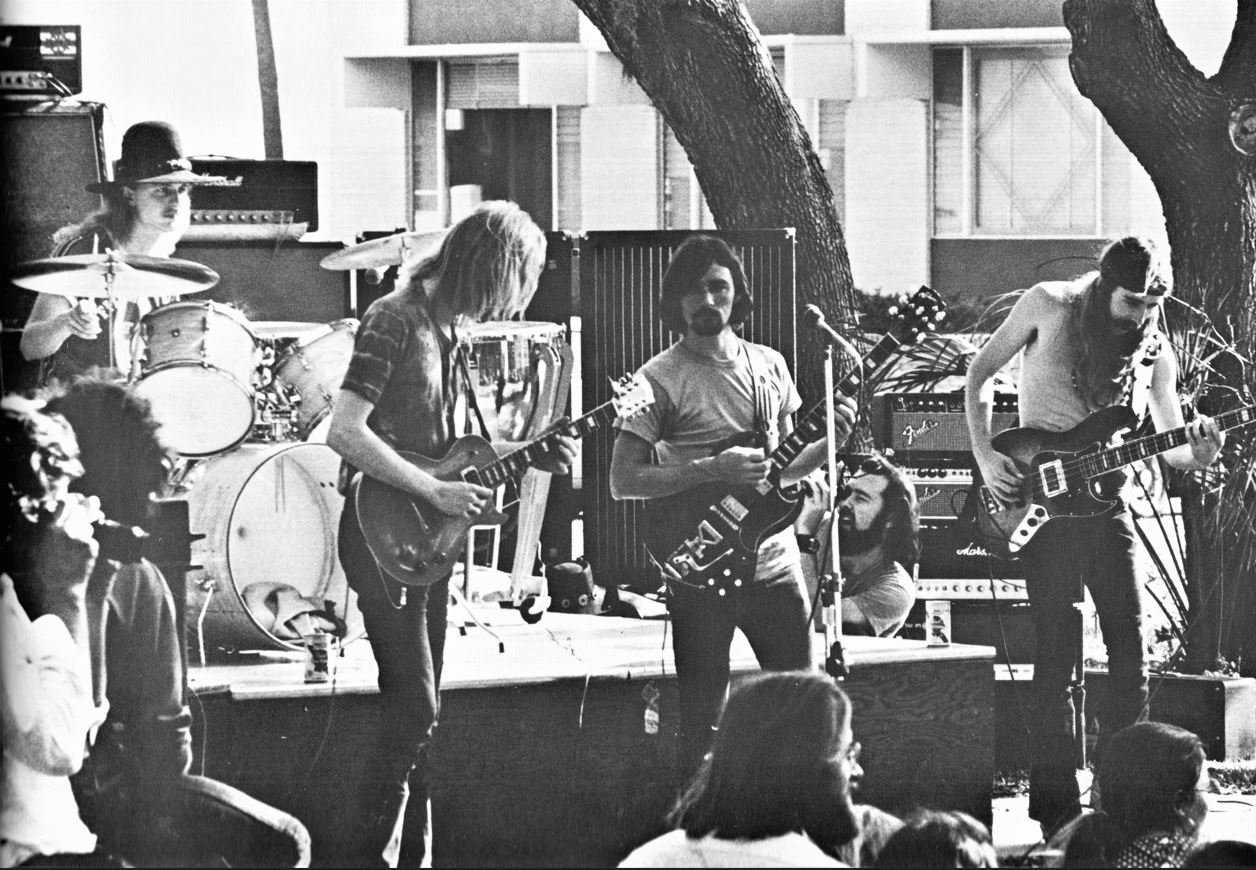
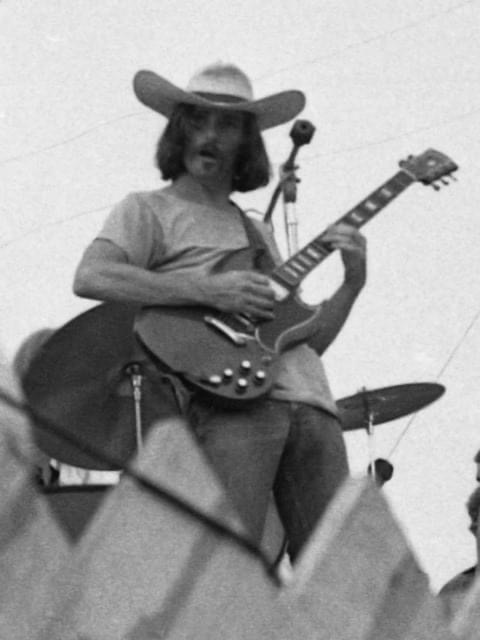
The guitar is identifiable by its three “snakebites”—screw holes where the original tailpiece was.
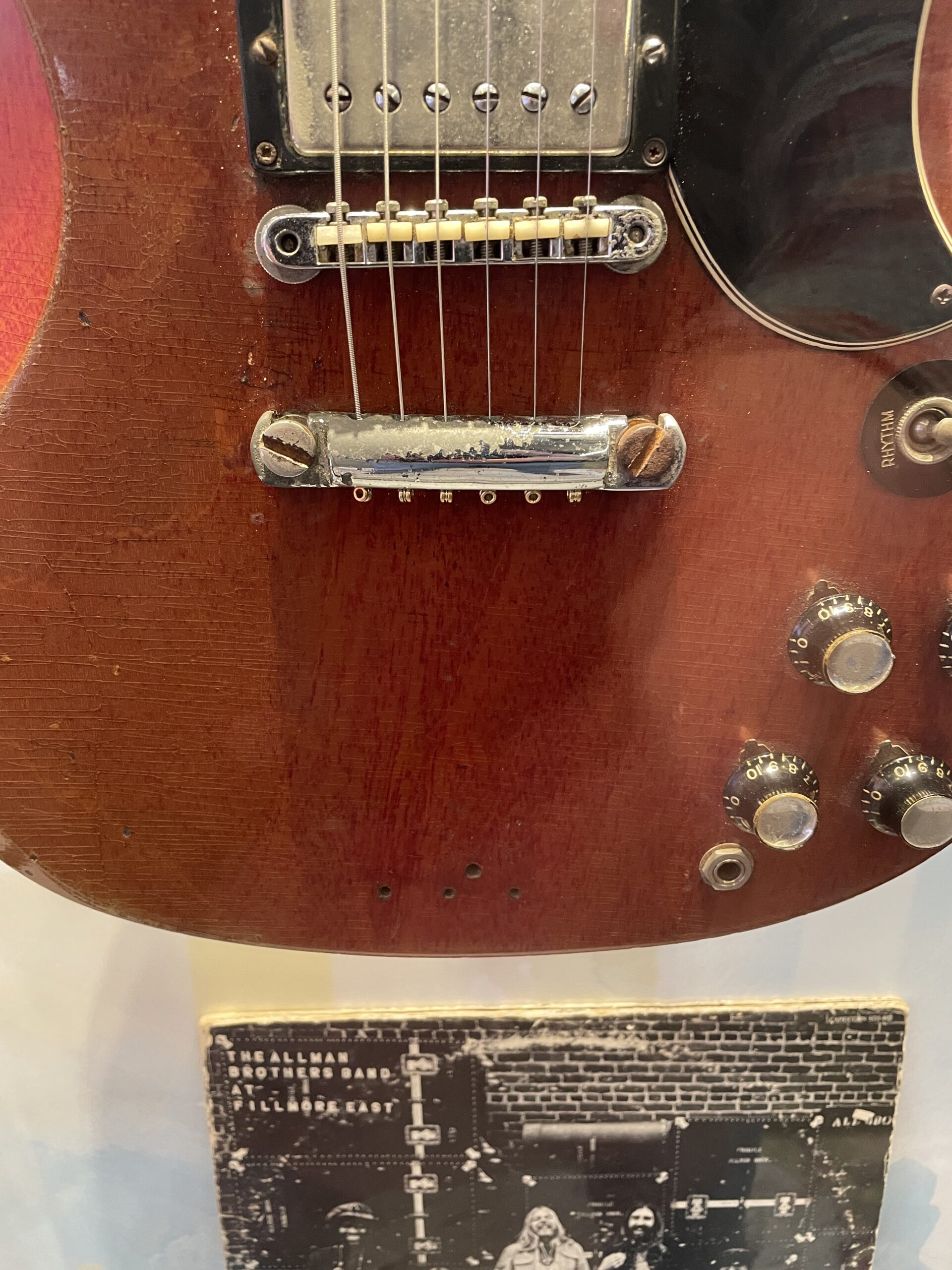
From Dickey to Duane Spring 1971
The guitar ended up in Duane’s hands in 1971. Because he preferred to play slide in open-E tuning, Duane regularly had to retune his guitar. It not only slowed down pacing, it also bored Dickey Betts.5
“When Duane wanted to play slide he would have to retune his one [damn] guitar every time. I got tired of it and said, ‘Here, take this guitar and tune it, and leave it tuned!’”
Though it’s unclear whether Duane played the guitar on At Fillmore East, he definitely played in on “One Way Out” from Eat a Peach—recorded the closing night of Fillmore East, June 27, 1971 (photo below)
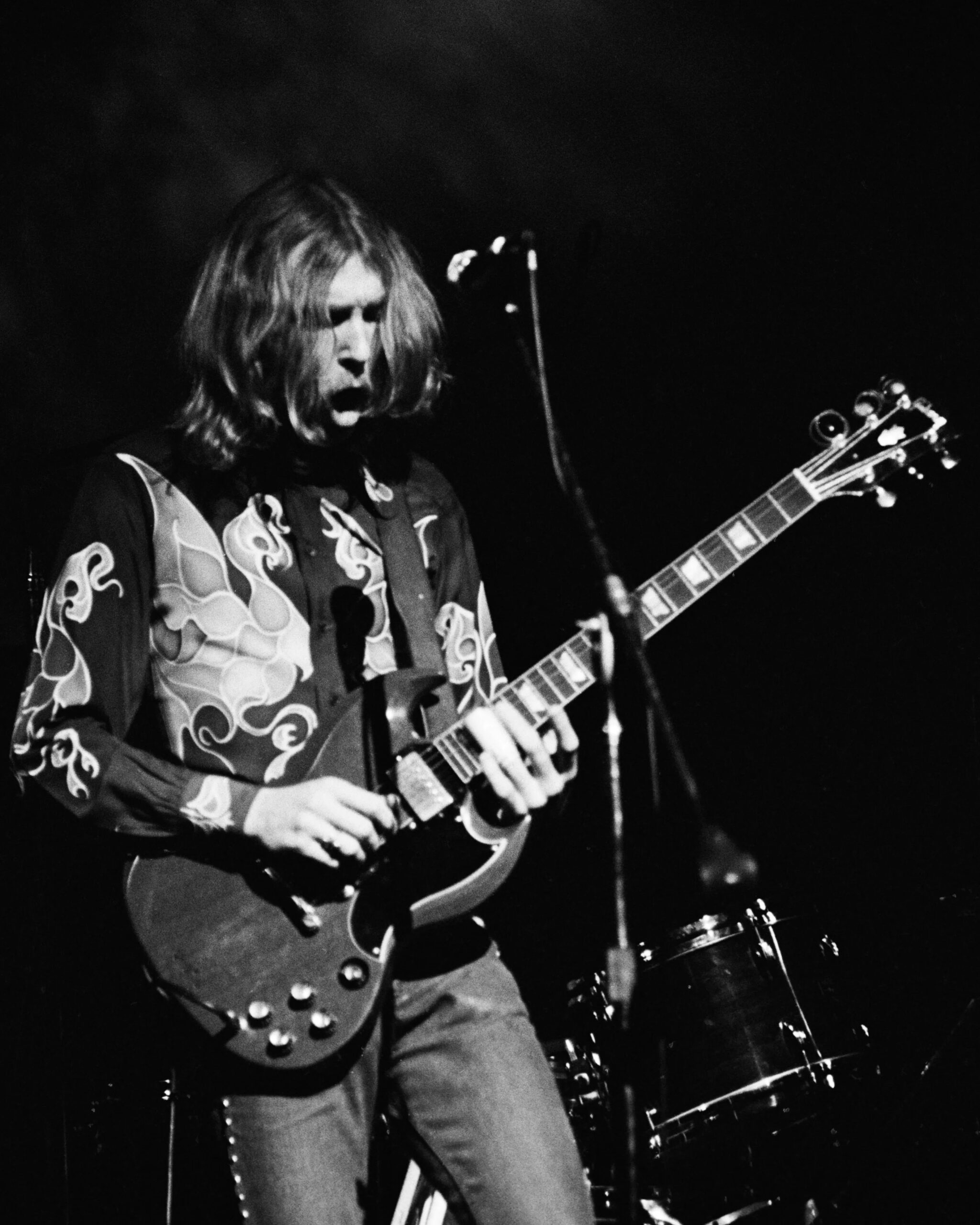
When Duane died in a motorcycle accident October 29, 1971, the original intention was to bury the guitar with him. This didn’t happen. Gregg played it through 1972 before giving it to Gerry Groom, a protégée of Duane’s. Groom later sold it to Graham Nash.
Duane’s other Allman Brothers Band Guitars
The SG is one of four Les Pauls Duane played in his Allman Brothers Band career. Three of them, a 1957 goldtop he used through September 1970, a 1959 cherry burst, and a 195(?)6 tobacco burst. A private collector owns the goldtop and it’s often on display at the Big House Museum in Macon. Duane’s daughter Galadrielle owns the other two, which she’s loaned out for exhibition from time to time, most recently the Bill Graham and the Rock & Roll Revolution.
In 2011, Gibson reissued the guitar, dubbed “From One Brother to Another.” Duane’s daughter gave Artist’s Proof #4 to Derek Trucks, who played in the Allman Brothers Band from 1999-2014. It’s been Derek’s main stage guitar for more than a decade now.
Duane’s SG Today
The SG stayed out of the public eye for many years. The first I remember it appearing was a 2013 exhibit called Guitars! Roundups to Rockers at the Eiteljorg Museum in Indianapolis. In 2019, Nash made the guitar available for the Metropolitan Museum of Art’s Play It Loud exhibition. He sold the guitar to a private collector who has it on loan to the Songbirds Museum in Chattanooga. Yours truly wrote the label copy.
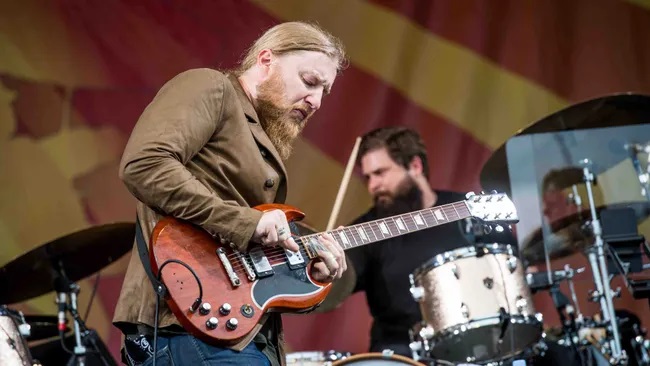
1 Though it’s a misnomer to call Duane Allman’s cherry 1961 Gibson Les Paul an SG (that name, short for “Solid Guitar,” arrived in 1963), pretty much everyone calls it an SG. I follow that convention here. 2 Dickey Betts also played the SG in some of the too-rare video footage of the Duane-era Allman Brothers Band, including at Bill Graham’s famed Fillmore East in September 1970. 3 Bob Beatty, Play All Night! Duane Allman and the Journey to Fillmore East (Gainesville: University Press of Florida, 2022), 120. 4 I love Emery’s conclusion, “I was [exploitive] at Duane and them for quite a while, even after I learned about the Allmans.” Ground Guitar, “Duane Allman’s 1961 Gibson SG / Les Paul,” accessed October 31, 2023. 5 Open E is tuned to the E chord on a guitar–EBEG#Be. Standard tuning is EAGBDe. 6 See Ground Guitar, “Duane Allman’s 1961 Gibson SG / Les Paul.”
Bob Beatty is a historian who writes Long Live the ABB: Conversation from the Crossroads of Southern Music, History, and Culture . His latest book, Play All Night! Duane Allman and the Journey to Fillmore East (University Press of Florida 2022), is a musical biography of the Allman Brothers Band.
